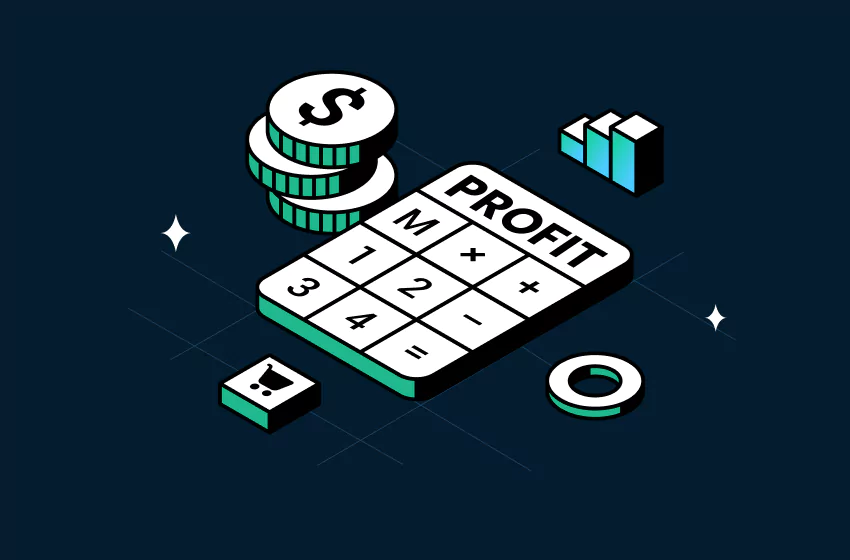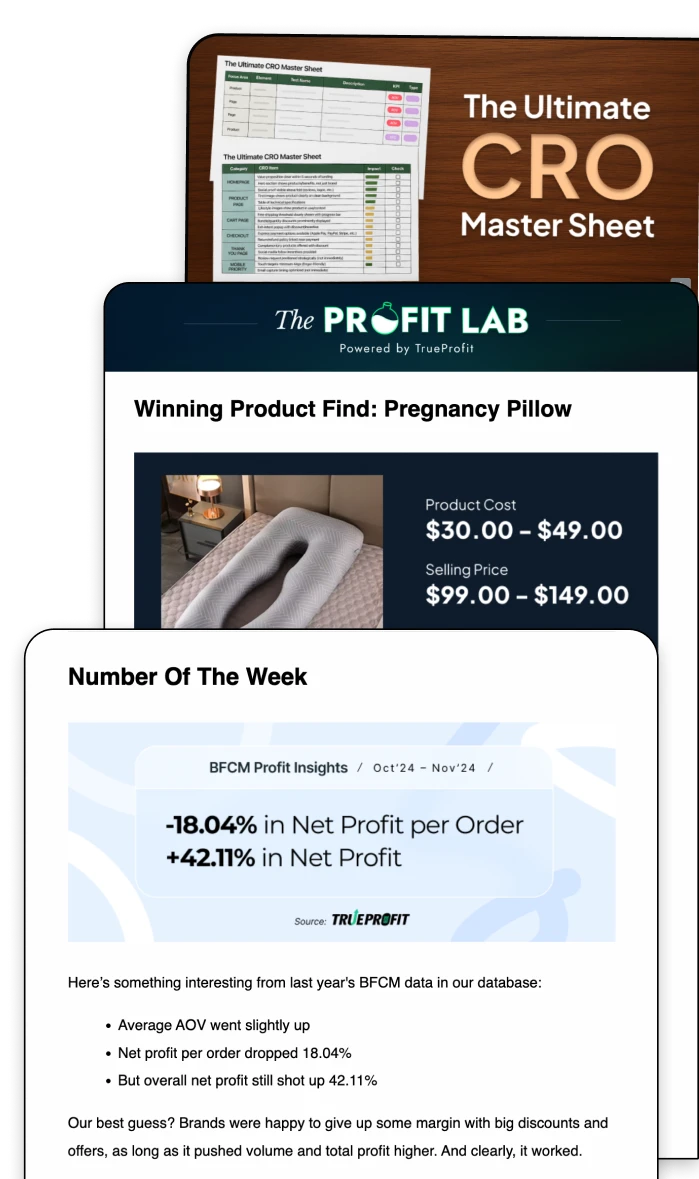How to Calculate Profit in Business? (E-commerce Edition)

How to calculate profit in business? It's simple than you've ever imagined: subtract your total expenses from your total revenue.
Profit is the money your business makes after covering costs. There are two main types: gross profit and net profit. Gross profit looks at your revenue minus the direct costs of making your product, while net profit accounts for all expenses, including operating costs, taxes, and more.
In this guide, we’ll walk you through how to calculate both types of profit and why they matter for your business.
How to Calculate Profit in Business?
First off, let me define the types of profits (gross and net) to set the stage for the rest of the post.
- Gross profit is the money left after subtracting the cost of producing your product.
- Net profit is what’s left after all expenses, like rent, salaries, and taxes, are deducted.
For business owners, net profit margin is a key metric. It helps you see how much of your revenue is actually profit, guiding decisions on pricing, costs, and growth strategies.
How to Calculate Gross Profit
To calculate gross profit, subtract the Cost of Goods Sold (COGS) from your total revenue.
The formula is:
COGS covers all direct costs tied to producing the goods or services you sell, such as:
- Raw materials
- Labor costs for production
- Manufacturing expenses
Here’s step-by-step process to calculate gross profit:
Step 1: Identify Total Revenue: This is the total amount of money your business earns from sales or services.
Step 2: Identify Cost of Goods Sold (COGS): Calculate the direct costs of making or providing your product or service.
Step 3: Subtract COGS from Revenue: The result is your gross profit.
If your business has total revenue of $50,000 and COGS of $30,000, then:
Gross Profit = $50,000 - $30,000 = $20,000
How to Calculate Net Profit?
To calculate net profit, subtract your total expenses from your total revenue.
The formula is:
Total expenses include everything your business spends money on, such as:
- COGS (already explained in gross profit)
- Operating Costs: Rent, utilities, salaries, marketing
- Taxes: Government taxes on income
- Other Expenses: Interest on loans, insurance, etc.
Here’s step-by-step process to calculate net profit:
Step 1: Identify Total Expenses: Add up all costs, including COGS, rent, utilities, wages, and taxes.
Step 2: Subtract Total Expenses from Revenue: This gives you your net profit.
If your total revenue is $80,000, and your total expenses (including COGS, rent, salaries, etc.) are $60,000, then:
Net Profit = $80,000 - $60,000 = $20,000
This is your business’s net profit, the final profit after all costs have been accounted for.
Key Considerations When Calculating Profit
When calculating profit, it’s important to understand what counts as revenue and expenses.
Revenue includes all money your business earns, such as:
- Sales from products or services
- Interest from investments
- Other income like royalties or rental income
Running a business comes with all kinds of expenses, and they usually fall into three big categories:
- COGS (Cost of Goods Sold): These are direct costs like raw materials, manufacturing, or production labor.
- Operating Expenses: These are ongoing costs like rent, utilities, payroll, and marketing.
- Other Expenses: This includes taxes, interest on loans, or one-time charges like legal fees.
To calculate profit and loss correctly, keep track of every revenue and expense accurately. Proper accounting practices help ensure your profit calculations are reliable and guide smart business decisions.
How to calculate profit in business is more than just math — it's about clarity. The biggest takeaway? Know the difference between gross and net profit, and track both closely. It’s how you make smarter decisions, not just bigger sales.
If you're tired of manual spreadsheets or guessing your numbers, TrueProfit can help. It tracks your true profit in real-time, with a dashboard that shows everything in one place — automatically.
Irene Le is the Content Manager at TrueProfit, specializing in crafting insightful, data-driven content to help eCommerce merchants scale profitably. With over 5 years of experience in content creation and growth strategy for the eCommerce industry, she is dedicated to producing high-value, actionable content that empowers merchants to make informed financial decisions.





 Shopify profits
Shopify profits